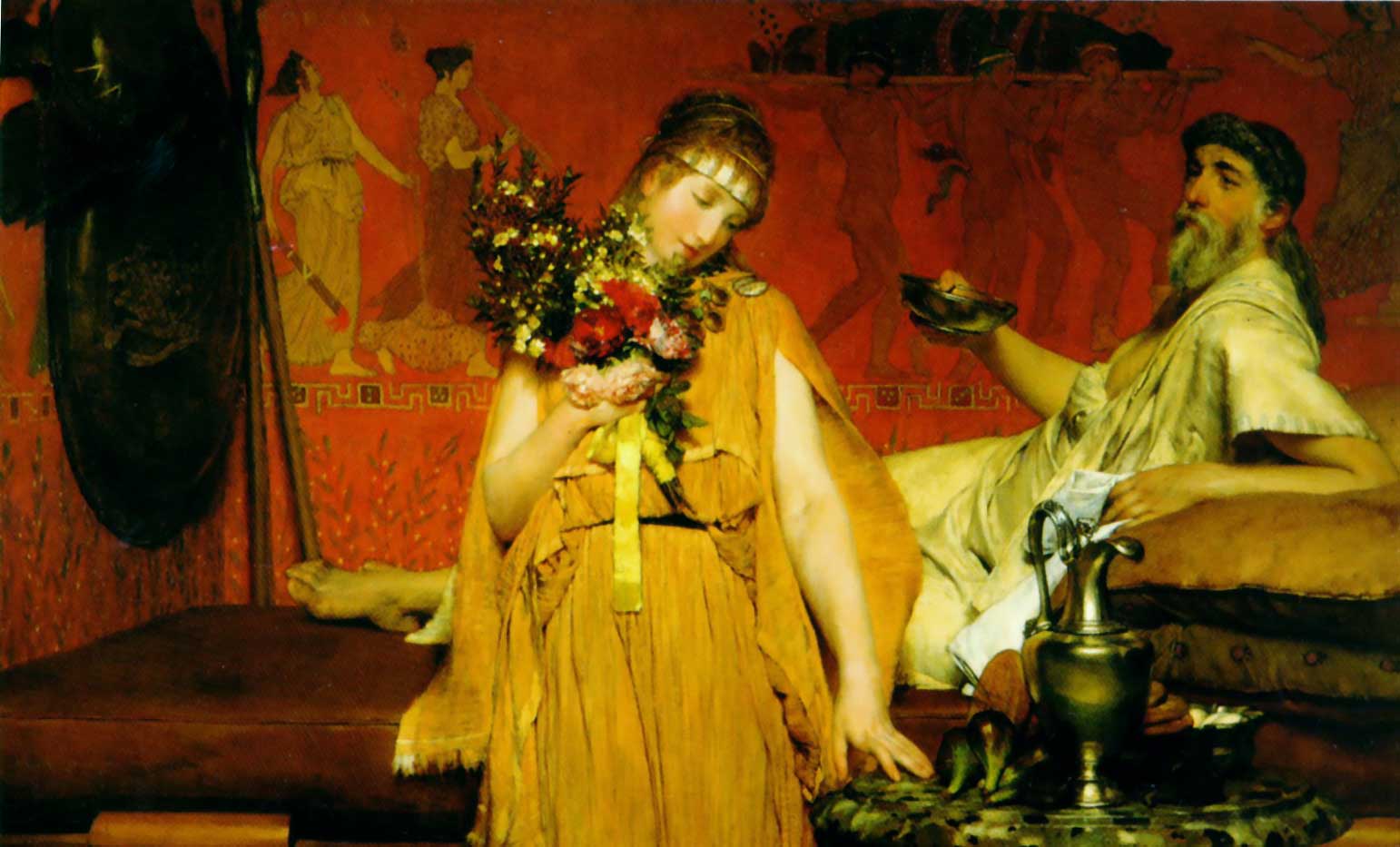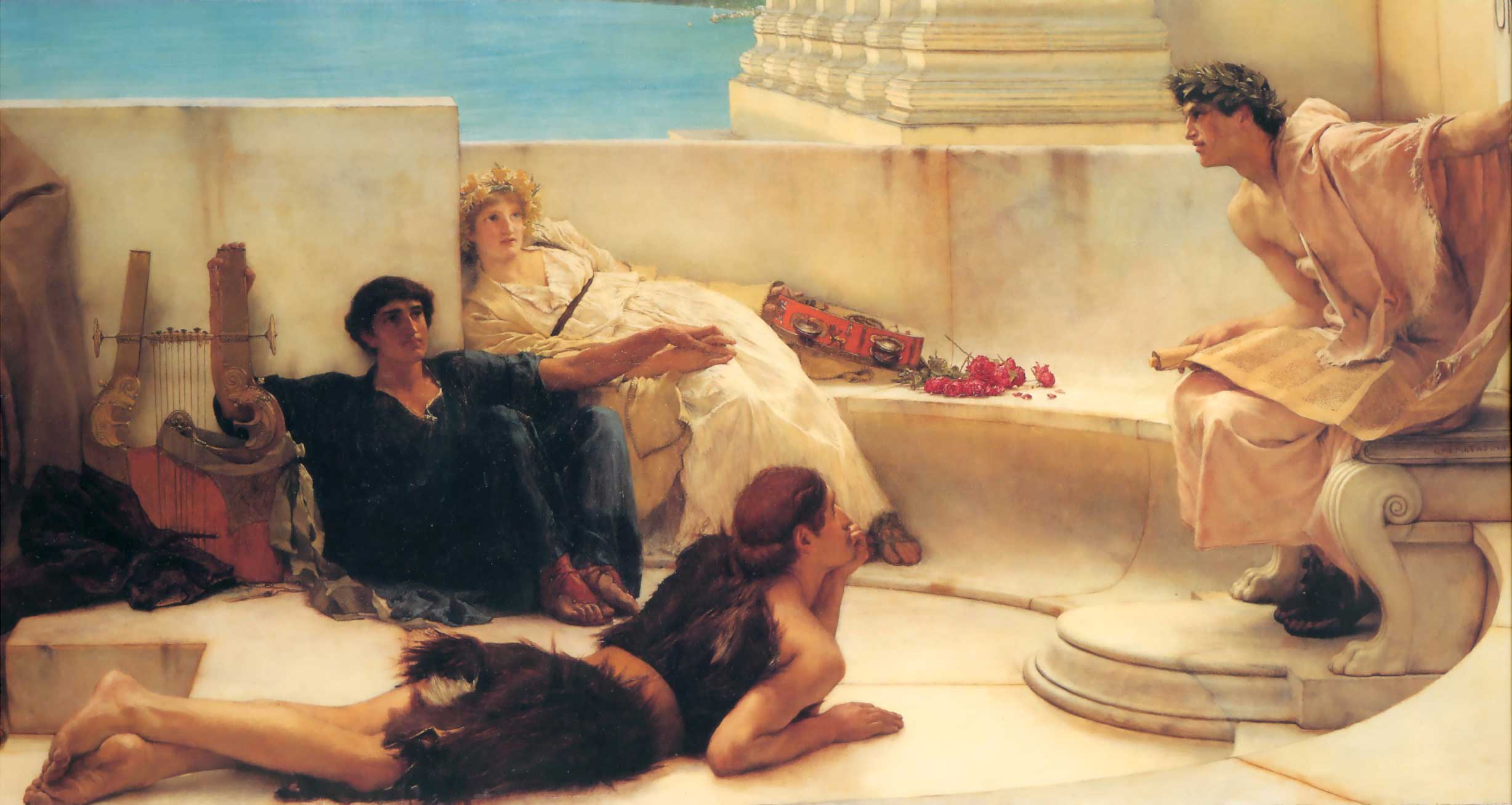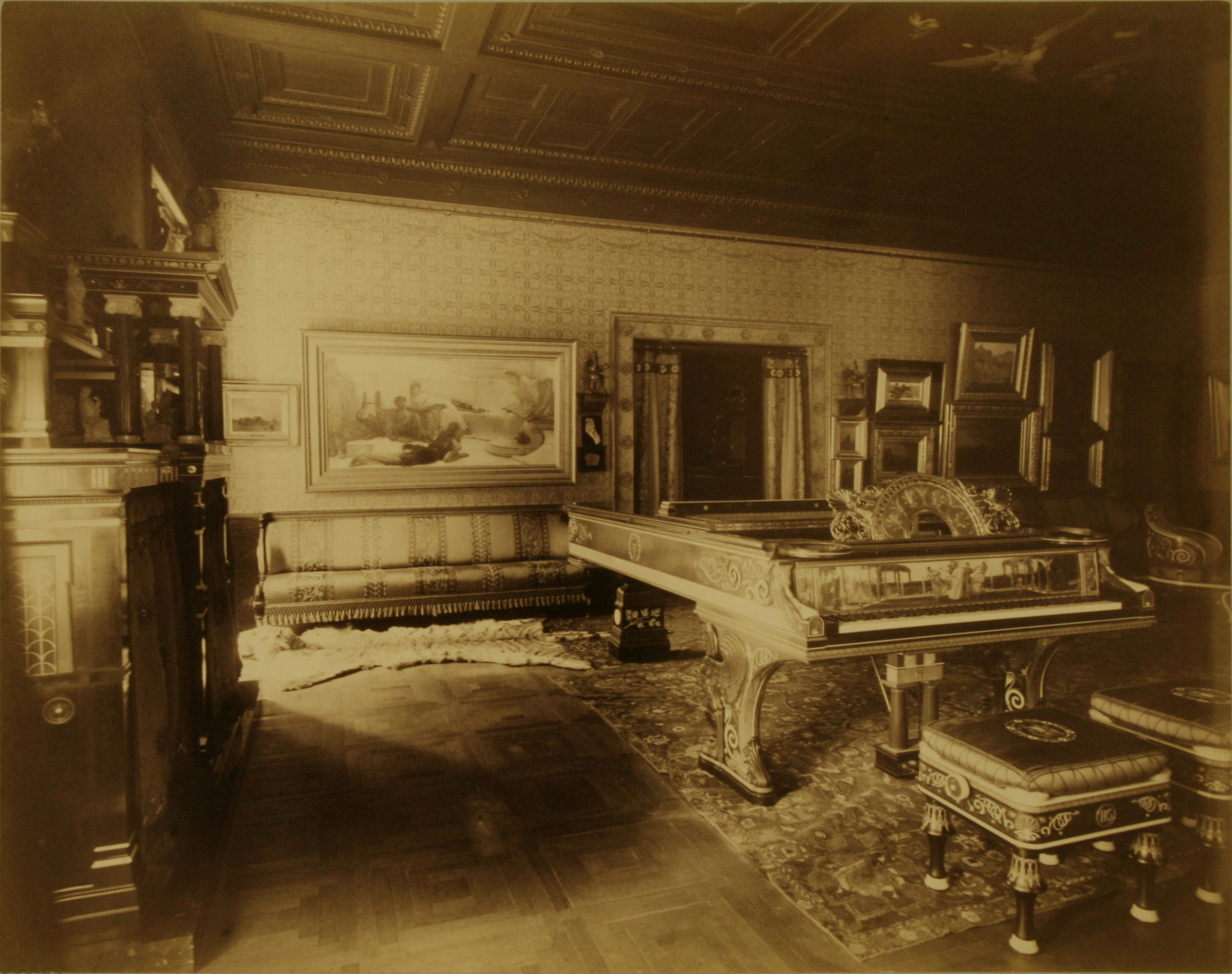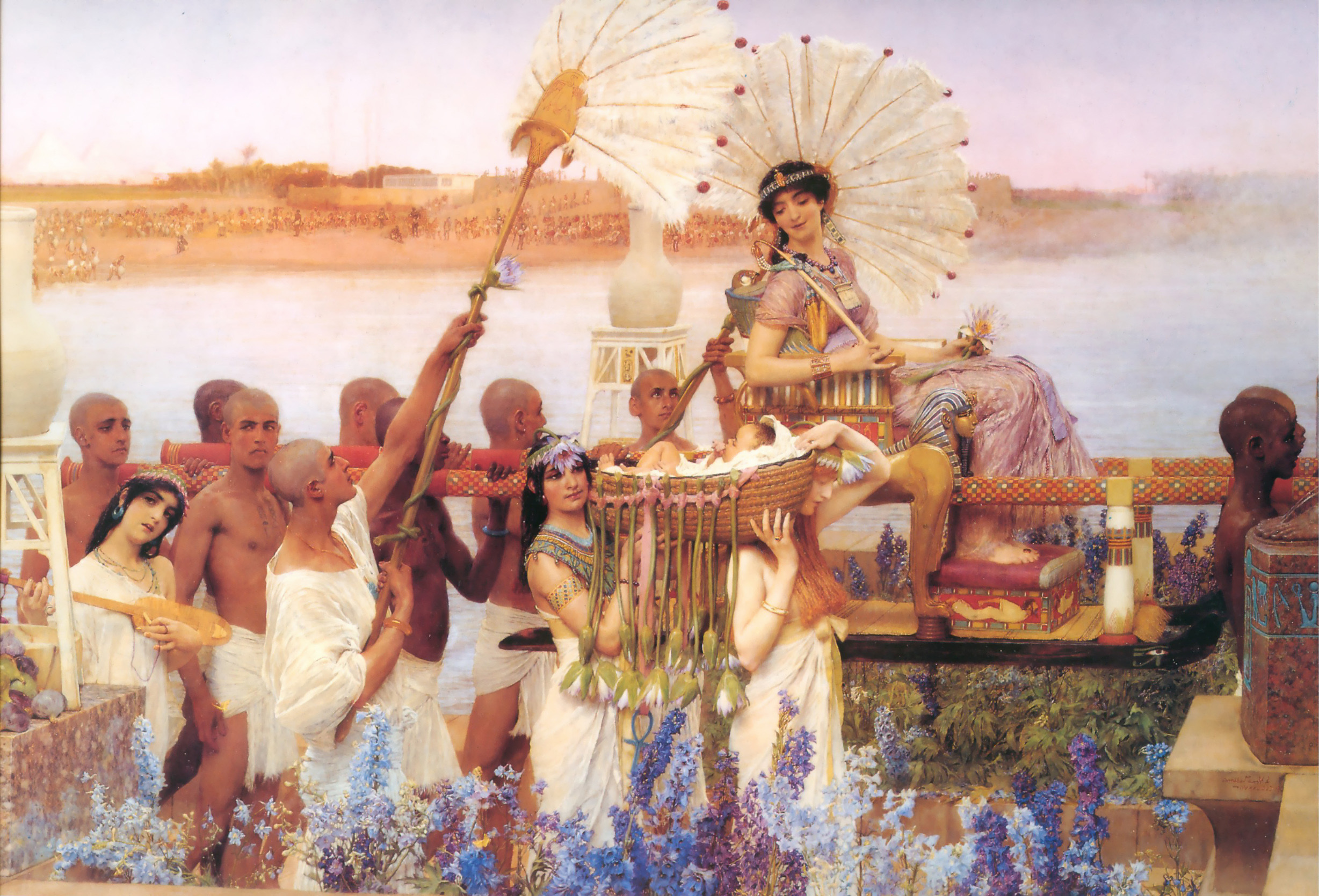Clark Art Institute
June 4–September 4, 2017
As resurgent interest in Sir Lawrence Alma-Tadema (British, born
Netherlands 1836–1912) raises appreciation and interest in his work for a
new generation, the Clark Art Institute
offers new insight into one of the painter’s most successful and
distinctive artistic endeavors—the design of a music room for the New
York mansion of financier, art collector, and philanthropist Henry
Gurdon Marquand (1819–1902).
Orchestrating Elegance: Alma-Tadema and
Design reunites twelve of nineteen pieces from the original furniture
suite, along with paintings, ceramics, textiles, and sculpture from the
room for the first time since Marquand’s estate was auctioned in 1903.
The Clark’s ornately decorated Steinway piano, acquired in 1997, is the
centerpiece of the exhibition.
On view June 4–September 4, 2017, the exhibition examines
the music room and its objects from a number of perspectives, including
how the commission unfolded and why Alma-Tadema was chosen to design the
interior in a Greco-Pompeian style; the contributions of other artists,
such as Frederic, Lord Leighton (English, 1830–96) and Sir Edward
Poynter (English, 1836–1919); the aesthetic impact of the finished
furniture and room; and the history of the piano. In addition to objects
from the original music room, the exhibition includes paintings,
preparatory drawings, books, and photographs that provide background and
context for the project.
“Exhibition
co-curators Kathleen Morris and Alexis Goodin have brought back to life
one of the great interiors of Gilded Age New York,” said Olivier
Meslay, Felda and Dena Hardymon Director of the Clark. “We look forward
to giving our visitors the experience of stepping back in time to marvel
at one of the most extraordinary artistic collaborations of the late
nineteenth century.”
Henry Marquand was one of the founders of The Metropolitan
Museum of Art and acted as its second president. He donated many works
of art to the Met during his life, often buying specifically for that
purpose.
The Met’s imposing portrait of Marquand by John Singer Sargent
(American, 1856–1925), which affirmed the sitter as a prominent member
of late-nineteenth century New York society, is featured in the Clark’s
exhibition. Marquand’s collections filled his house, which included a
series of rooms dedicated to separate artistic cultures or styles, each
featuring interiors designed by leading artists and craftsmen to
complement displays of original works of art.
“Tracking down the location of all of these objects, and
researching their fascinating histories, has been immensely exciting and
rewarding,” said Kathleen M. Morris, exhibition co-curator and Sylvia
and Leonard Marx Director of Exhibitions and Curator of Decorative Arts.
“We found a pair of original portieres, or door curtains, from the
suite in a private collection and developed a close friendship with the
owner, Brian Coleman. We were thrilled when he donated them to the Clark
in 2015. These portieres have added enormously to our knowledge of how
the original suite looked, as the rest of the furniture has lost its
original upholstery.” These original textiles helped Morris and
co-curator Alexis Goodin, curatorial research associate, recreate the
original upholstery of the Clark’s piano stools in collaboration with
noted weaver Rabbit Goody of Thistle Hill Weavers, embroiderer Elizabeth
Creeden of Wellingsly Studio, and upholsterer Elizabeth Lahikainen, who
specializes in historical furniture.
The conservation projects undertaken in advance of the
exhibition also included the recreation of missing “HMG” monograms
originally inlaid on both sides of each piano stool. “Equaling the high
caliber craftsmanship of the original wasn’t easy or quick to
accomplish, but the furniture conservator, artist, and wood turner we
worked with rose to the challenge on this project. They expertly
recreated the inlay that has long been missing from the stools,
returning these pieces to their original aesthetic,” noted Goodin. The
conservation projects are highlighted in the final gallery of the
exhibition.
Alma-Tadema and Classical Antiquity
The Marquand mansion was designed by architect Richard
Morris Hunt (1827–1895) and completed in 1884. When Marquand
commissioned Alma-Tadema, the London-based artist was well established
as the premier painter of classical antiquity. Orchestrating Elegance
includes several paintings that helped build this reputation:
Preparation for Festivities (1866),
The Sculpture Gallery (1875),
Between Hope and Fear (1876),
and The Women of Amphissa (1887).
In
addition, preparatory sketches and related drawings and photographs
demonstrate his ability as a draftsman and his approach to incorporating
ancient references in his works. Alma-Tadema’s skill as a designer of
interiors was also well known at the time of the commission. He
designed his own homes in London to showcase his extensive and eclectic
collections, and these interiors were celebrated in many publications of
the time. Marquand no doubt knew of these famous houses and made the
decision to commission the artist to design the music room.
The Music Room
The music room acted as the Marquand mansion’s parlor and
formed the social center of the residence. In it, Marquand displayed a
portion of his famous collection of European paintings including two
works by Alma-Tadema:
A Reading from Homer (1885)
and Amo Te, Ama Me
(1881),
both on view in the exhibition. Classical antiquities, including
marble sculptures and vases, as well as modern sculpture in the antique
style were also found in the room and are represented in the
exhibition.
Marquand set no cost limit for the music room project,
which was Alma-Tadema’s only commission of this type. The resulting
furniture suite, extraordinary in every detail, created a sensation when
it was displayed in London prior to shipment to New York. Acclaimed for
its imaginative forms, the suite was painstakingly decorated with
veneers of ebony and cedar accented with elaborately carved inlays of
boxwood, ivory, abalone, and mother-of-pearl. Magazines and newspapers
on both sides of the Atlantic featured extensive coverage of the
furniture and the room, praising the design and craftsmanship, while
marveling at the cost: an estimated $50,000 for the piano alone. When
the Clark purchased the piano at auction in 1997 for $1.2 million,
headlines across Europe and the United States once again touted the
price paid for the piano, which was the most expensive sold at auction
up to that time. That benchmark was eclipsed in 2000 when the piano John
Lennon used to write Imagine sold for $2.1 million.
Specialist art and furniture periodicals as well as the
popular press lauded the suite at the time it was made. The furniture
was described in superlative terms—“magnificent,” “splendid,” “superb,”
“exquisite,” “invaluable product of artistic genius,” “elaborate and
beautiful,” “unique,” “remarkable alike in conception and execution.” In
addition to the Clark’s piano and stools, Orchestrating Elegance
includes a total of seven settees and chairs; a monumental music
cabinet; and a circular onyx-top table from the celebrated suite, all
gathered from public and private collections in the United States and
Europe. The private collection objects have never before been exhibited
outside of auction sales rooms.
Artistic Collaboration and Partnership
Alma-Tadema commissioned other artists to contribute to the
music room. Frederic, Lord Leighton created a triptych ceiling painting
featuring a number of allegorical figures representing music, poetry,
inspiration, and dance. Orchestrating Elegance presents three drawings
of these panels that reveal the careful development process for which
Leighton was famous. Edward Poynter was chosen by Alma-Tadema to paint
the piano’s fallboard, resulting in one of the most celebrated
components of the suite. Poynter, like Alma-Tadema and Leighton, was
known for his subjects inspired by classical antiquity, and his precise
and jewel-like painting style was ideally suited to the intimate
proportions of the interior of the fallboard, visible when the keys are
exposed.
When Johnstone, Norman & Co. obtained the Marquand
music room commission in 1884, the company was well known among high-end
London furniture manufacturers. The Marquand commission resulted in the
most celebrated furniture ever made by the firm, raising its
international reputation and stimulating overreaching ambitions that
ultimately led to the company’s demise. Although the exact nature of
Alma-Tadema’s relationship with the firm is unknown, it is likely that
he used the company to manufacture furniture for his own his studio and
confidently recommended it to Marquand. While Marquand likely traveled
to London to solidify his wishes with Johnstone, Norman & Co., the
commission was carried out under the active supervision of Alma-Tadema,
whose designs for the piano and a suite of matching furniture and
textiles were converted to fabrication drawings.
Alma-Tadema and His Art, Full Circle
The piano has a rich history as a musical instrument. Its
interior lid was fitted with parchment sheets so it could be signed by
the musicians who played it. Over the years, a number of famous
musicians signed it, including Walter Damrosch, Sir Arthur Sullivan, Sir
William S. Gilbert, and Richard Rogers. The exhibition includes a room
devoted to the musical history of the piano, featuring a video of the
recent performances on the piano including music tied to its history, as
well as several listening stations programmed with other selections
associated with the piano.
Following Marquand’s death in 1902, the contents of his
house were dispersed in a highly publicized and very successful public
auction. The Alma-Tadema suite sold to several buyers. The piano and its
stools were purchased by a Colonel William Barbour, who owned it for
two decades. When it came on the market in 1923, theater impresario
Martin Beck purchased it. He also was able to acquire some of the other
original furniture from the suite in a separate auction four years
later, and he placed the piano and various chairs, settees, and tables
from the suite in the mezzanine lobby of the Martin Beck Theatre (now
the Al Hirschfeld Theatre) on 45th Street in Manhattan. Eventually sold
by the theater’s owners, the furniture pieces entered into museum and
private collections as cherished objects reflective of the era’s highest
standards of design and taste.
Alma-Tadema achieved great success during his lifetime. His
paintings of imagined scenes from ancient times have influenced
directors of films set in antiquity such as BenHur and Gladiator, among
others. While admiration for his academic style of painting waned in the
early decades of the twentieth century, in recent years there has been
renewed interest in his work, and in 2011 his canvas
The Finding of
Moses sold for $35.9 million—an auction record for the artist.
In 2016
The Fries Museum opened the major exhibition Alma-Tadema: At Home in Antiquity, which traveled to Vienna and will be shown in summer 2017 in
London, the city where Alma-Tadema enjoyed his greatest success.
Orchestrating Elegance: Alma-Tadema and the Marquand Music
Room, a fully illustrated catalogue of the exhibition, is distributed by
the Clark and Yale University Press. Contributors include co-curators
Kathleen M. Morris and Alexis Goodin, with essays by Melody Barnett
Deusner and Hugh Glover.








